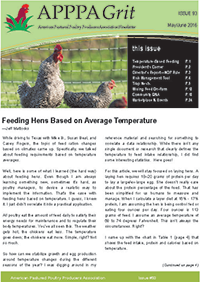3 Pillars of a Successful Breeding ProgramThis article originally published by Matt Hemmer, Heritage Poultry Breeders Educational Foundation. The pillars are a breeding plan, hatch enough chicks, and select to a standard.
1: A well thought out Breeding planThe first component of successful breeding is a well thought out breeding plan. There are three primary plans that are commonly used. They all have features which allow them to be implemented successfully. It is up to the breeder to select the system that fits their particular situation. Spiral or Clan mating: This system entails creating three or five clans identified by the females in the clan. In this system you rotate annually or bi-annually; mating the males with members of the other clans The respective clans are then replenished with females from those matings. Females always stay with their clans. This system is a great way to maintain genetic diversity within a closed flock. The 3 clan system, used properly, is expected to be sustainable for up to 20 generations. The 5 clan system will supposedly work for perpetuity. There is a substantial record keeping requirement to execute this system properly, plus you must maintain at least three breeding pens per breed. Rolling mating: In this system you have a pen for each year/generation. You then “roll” mate young to old. Ex: cocks with pullets and cockerels with hens. This can work with a setup as simple as a pullet pen and a hen pen; or you can maintain as many generations as the longevity of your birds or your facilities allow. The record keeping with this system is fairly simple and straight forward. This system can be executed with as few as two breeding pens. Flock Mating: This system functions much as the name describes. It is comprised of a single flock containing all your breeding males and females. Record keeping is minimal as lineage of individual chicks is unknown. This system can be executed with a single pen. 2: Hatch Sufficient NumbersIn order to expect any meaningful improvement through your breeding, you need to be able to hatch and raise a significant number of chicks. This may be the most overlooked aspect of most breeding systems. Breeding for improvement means only breeding from your best. Ideally, you are only keeping one or maybe two birds out of every 10 that are raised. Simple math tells us that to replenish a 10 to 12 bird pen every year, combined with the expectation of improvement, you must be able to raise at least 100 chicks. One of my first introductions to heritage poultry breeding was listening to Frank Reese present at seminar sponsored by the Livestock Conservancy. He made the case that you couldn’t expect to make much progress unless you hatched at least 500 chicks per year. I found that to be a bit intimidating, and to this day have not hatched 500 chicks from one breed in a year. However, I have discovered that meaningful progress can be made year-over-year with hatch numbers of around 250 per breed. 3: Apply Appropriate Breeder Selection CriteriaBreeder selection is an extremely important element of your program. This is where you lock in your year on year improvement; where you get to harvest your season of hard work. It’s the reward. It’s critical that you know what you are selecting for. Your scale and your written standard are your two most important tools for this phase. Weigh all your birds first, as this will help you segregate the top 3rd from the middle 3rd and bottom 3rd. You will generally expect to only be working with your top 3rd of your birds. The next step is where your written standard comes into play. A good selection program hinges on your ability to relate your birds to the descriptions in the Standard of Perfection. While in early “improvement” mode you may be evaluating birds with multiple weaknesses. The standard and the point system will help you evaluate which flaws/weaknesses are more serious than others. Developing a numerical scoring system allows you to compare birds from different hatches and provides for tracking year-on-year progress. I use a modified Hogan scoring system developed by Karen Johnston. This is also a place where a selection coach can really help. An area poultry judge and a long term breeder are examples of people who can assist you with this most important step. Heritage Poultry breeding can be both challenging and a lot of fun. A breeding system built around these three pillars can get you moving in the right direction. Receive Free PDF Issue of APPPA Grit Newsletter
| Membership At a Glance
Consumer Guide
|


 APPPA publishes a weekly newsletter to bring tips, news, and thoughtful commentary about pastured poultry to your inbox. Subscribe and receive a free issue of our bi-monthly trade newsletter, APPPA Grit. We mail APPPA Grit to all paid members bi-monthly.
APPPA publishes a weekly newsletter to bring tips, news, and thoughtful commentary about pastured poultry to your inbox. Subscribe and receive a free issue of our bi-monthly trade newsletter, APPPA Grit. We mail APPPA Grit to all paid members bi-monthly.